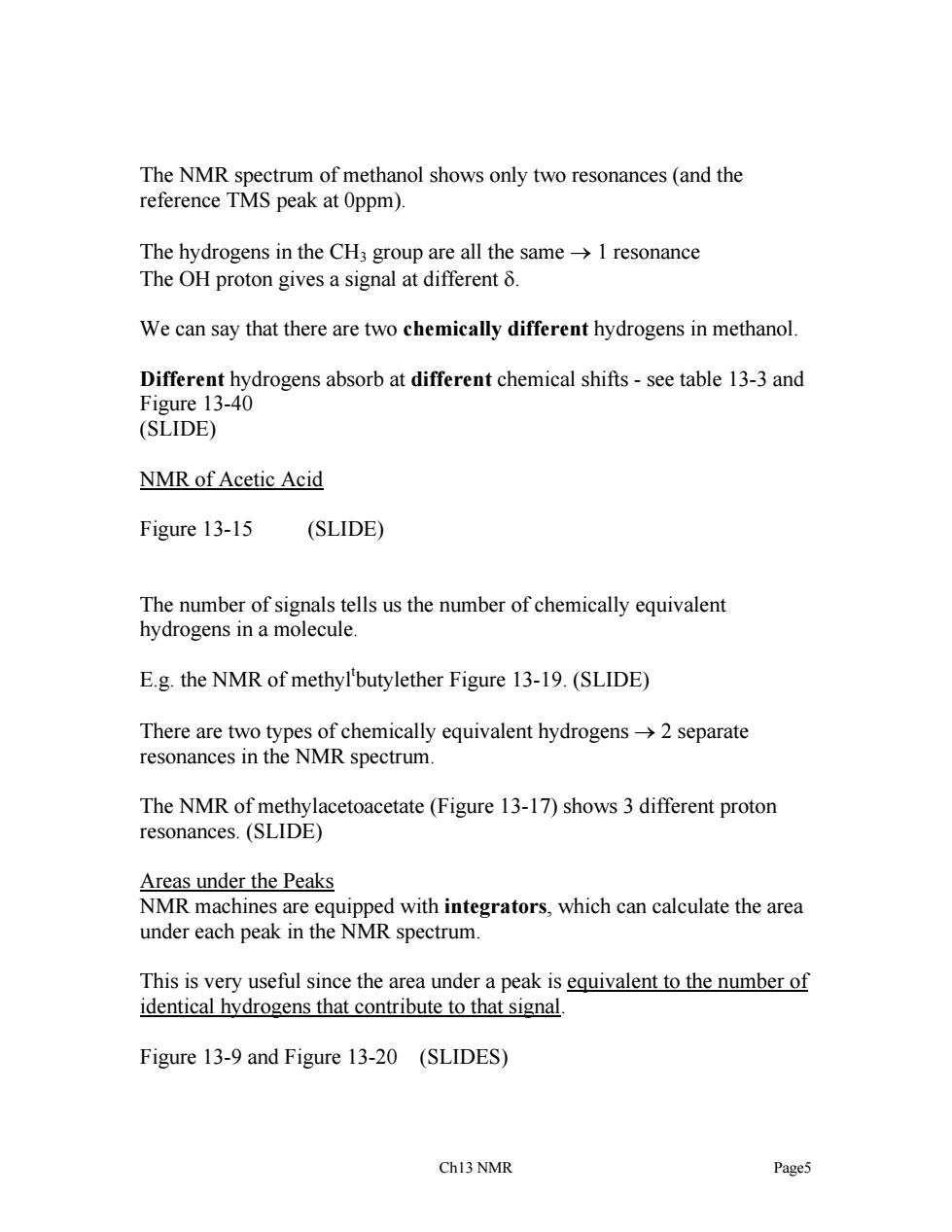正在加载图片...

The NMR spectrum of methanol shows only two resonances (and the reference TMS peak at Oppm). The hydrogens in the CH3 group are all the same>1 resonance The OH proton gives a signal at different 8. We can say that there are two chemically different hydrogens in methanol. Different hydrogens absorb at different chemical shifts-see table 13-3 and Figure 13-40 (SLIDE) NMR of Acetic Acid Figure 13-15 (SLIDE) The number of signals tells us the number of chemically equivalent hydrogens in a molecule. E.g.the NMR of methyl'butylether Figure 13-19.(SLIDE) There are two types of chemically equivalent hydrogens>2 separate resonances in the NMR spectrum. The NMR of methylacetoacetate(Figure 13-17)shows 3 different proton resonances.(SLIDE) Areas under the Peaks NMR machines are equipped with integrators,which can calculate the area under each peak in the NMR spectrum. This is very useful since the area under a peak is equivalent to the number of identical hydrogens that contribute to that signal. Figure 13-9 and Figure 13-20 (SLIDES) Ch13 NMR Page5The NMR spectrum of methanol shows only two resonances (and the reference TMS peak at 0ppm). The hydrogens in the CH3 group are all the same → 1 resonance The OH proton gives a signal at different δ. We can say that there are two chemically different hydrogens in methanol. Different hydrogens absorb at different chemical shifts - see table 13-3 and Figure 13-40 (SLIDE) NMR of Acetic Acid Figure 13-15 (SLIDE) The number of signals tells us the number of chemically equivalent hydrogens in a molecule. E.g. the NMR of methylt butylether Figure 13-19. (SLIDE) There are two types of chemically equivalent hydrogens → 2 separate resonances in the NMR spectrum. The NMR of methylacetoacetate (Figure 13-17) shows 3 different proton resonances. (SLIDE) Areas under the Peaks NMR machines are equipped with integrators, which can calculate the area under each peak in the NMR spectrum. This is very useful since the area under a peak is equivalent to the number of identical hydrogens that contribute to that signal. Figure 13-9 and Figure 13-20 (SLIDES) Ch13 NMR Page5